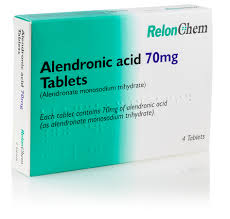Alendronic acid is a medication used to treat and prevent osteoporosis, a condition where bones become weak and brittle. It belongs to a class of drugs called bisphosphonates. Here’s a general description:
Alendronic Acid:
- Purpose: It is primarily used to treat osteoporosis in postmenopausal women and in men, as well as to prevent osteoporosis in individuals who are at high risk of developing the condition. It is also used to treat Paget’s disease of bone, a disorder that causes abnormal bone growth.
- Mechanism of Action: Alendronic acid works by inhibiting the activity of osteoclasts, the cells responsible for bone resorption. This leads to a decrease in bone loss and an increase in bone density.
- Administration: It is typically taken orally in the form of a tablet. For effective absorption, it should be taken on an empty stomach with a full glass of water, and the patient should remain upright for at least 30 minutes afterward.
- Common Side Effects: These may include gastrointestinal issues such as abdominal pain, acid reflux, and nausea. Rare but serious side effects can include osteonecrosis of the jaw and atypical femoral fractures.
- Precautions: It is important for patients to follow the dosing instructions carefully to minimize side effects and ensure the medication’s effectiveness. Regular dental check-ups are recommended, as there is a risk of jaw-related complications.
If you need more specific details or have any other questions about alendronic acid, let me know!























































